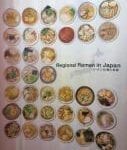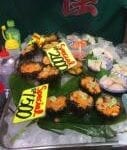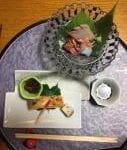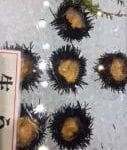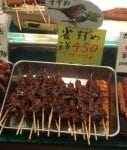Written by Thu Tran, MD,FACOG
February 28, 2019

I often heard the expression “We are what we eat,” which turned me immediately off from certain foods. Who would like to be a cow? Chicken? Pig? Should I be a turnip or donut? An apple or brownie? There is some truth in this statement, however, I secretly agreed.
Studies on obesity have shed some light on why some people have struggled with their weight. Many reasons have been cited, from stress to genetics, from “bad” food to lack of exercise. While this debate is ongoing, many exercise gurus boast how certain exercise regimens are more effective than others in keeping us slim. As we have found in some studies, unless you can run six miles a day, six days a week, at a pace of ten minutes per mile, you will not be able to lose a pound, which is the rough equivalent of 3,500 calories. A large slice of pizza contains almost 500 calories, while a salad with dressing and other added ingredients, in some restaurants, can have more than 1200 calories. Most scientists nowadays believe we need to watch what we eat if we truly want to lose weight or stay slim.
Should food be considered medicine? Many scientists think so. A recent excellent article in Time magazine showed how we can lose a significant amount of weight if we understand what certain foods can do to our body. Foods which help us achieve healthy weight can act as “medicine.” It is now well recognized that obesity is a significant contributor to the development of many chronic diseases such as hypertension, stroke, cancer and diabetes, conditions known to shorten our life. In some areas with low supply of healthy foods, such as fruits and vegetables, physicians can even order such foods for their patients through certain pharmacy systems! It’s a fascinating article showing how it can be innovative to use foods as treatment. We should, as the authors implied, think of foods as medicine.
Japanese are considered among those with the most impressive record in longevity. Okinawa has been considered one of the four “Blue Zones” in the world, where there are the most centennials. There have been numerous reports on how Japanese diet could be the main player in their longevity. My family was in Japan last summer and experienced the cultural aspects of the typical Japanese diet. We were even invited to spend an afternoon with a Japanese family, watching and helping them cook, and having lunch with them while chatting about politics, culture and, of course, foods.
Japanese meals, including breakfasts, are full of vegetables, seafood and soy products, served in small dishes. Many of these dishes have portions that would be considered “one bite” in a typical American meal. Japanese people probably would be shocked at our breakfasts at Silver Dinner. The portions of omelet, French fries, bread smothered with butter, probably would be enough for a Japanese to eat the whole day or more. We went to a famous steak house in one of the Japanese towns on our itinerary, where multiple delicious dishes of different grilled and pickled vegetables were served before the main course, which was a piece of steak smaller than my palm. I could not even finish the steak, as the vegetable dishes had filled me up.
We had at least four traditional Japanese “Kaiseki” dinners, where foods were beautifully presented in small dishes. There were exquisite and exotic ingredients, from tiny lily flowers, to delicate thumb size pieces of fish resting on a bed of colorful herbs and vegetables. Each course in a Kaiseki dinner was brought out separately, with a few minutes in between the courses. Guests would drink tea or fresh squeezed juices and talk to each other before the next course was brought out, unlike a typical American dinner where everything on big platters are quickly served, or all come out at the same time. We eat multiple food items while talking, and except in fancy restaurants, there is little decoration in our presentation of the foods. Japanese are known for “mindful eating, “ a practice many nutritionists agree would slow us down to every intentional bite, and increase our appreciation and respect for the foods we eat.
A delightful part of our stay in Japan was the walks through open markets or train stations. You can really see what the Japanese usually eat by walking through their markets. Seafood was abundant in so many forms, from fresh sea urchins ( which, to me, tasted like buttery mustard!) to fish cakes in various colors, from oyster “pancakes” to baby octopus stuffed with quail eggs! The fish market was, in itself, an “Anthony Bourdain” kind of experience. If you are adventuresome like me, you might discover an array of taste buds you thought you never had. A night in Osaka market was also a great way to see why Japanese live so long. Most foods come from the sea, or vegetable farms. Tourists and locals would know the specialty of a restaurant by the huge sculpture above its door, a shrimp or a cuttle fish, a crab or even a poisonous blow fish. Each portion we ordered from these restaurants, again, was served on small plate. Most items were grilled, not fried. Ingredients used were packed with nutrients, such as vitamin D in mushrooms and seaweed, Flavonoids in tempeh, tofu or miso, omega-3 in eggs and seafood, or all the fresh fruit stands full of vitamin C. Flavonoids in fermented soy are known to be heart protective and lower risk of breast cancer. Most Japanese we met told us how they go to neighborhood markets for fresh ingredients a few times a week. Because of their living spaces, they do not have huge refrigerators packed with frozen and processed foods as in our culture. Looking at the small kitchens in several Japanese families we visited, I could not imagine having enough shelves to store big bags of potato chips or chocolate chip cookies as in many American kitchens.
How we see and think of foods determine how healthy we may be. Of course, I was fully aware how there was so much more walking in a typical Japanese life than ours. The metro is their main transportation in many cities, and walking through the metro stations is like walking through a big mall in America, except at much faster pace. It looked as if it was quite easy to achieve that 10,000 steps a day in Japan. I was impressed at the fast pace many elderly were able to walk through metro stations or on the streets. Walking was their natural way of life. In many towns, in fact, as early as 6 a.m., people of all ages came out from their house to join in community exercises with music playing from loud speakers in public areas.
So that you know, ten thousand steps will not help you lose a pound, especially when we Americans pack our plate with sugary food, large amount of fried food, and the size of individual steak that can feed more than a few Japanese. It is true that we are what we eat but, equally important, we are how we eat.
Tags:













